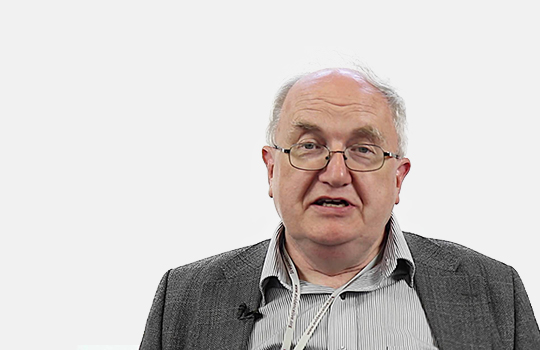 NEJM 23 Jun 2016 Vol 374
NEJM 23 Jun 2016 Vol 374
Adolescent BMI: big data, little meaning
2430 “How might adolescent BMI affect adult cardiovascular mortality? In our study, we could not control for important risk factors (e.g., smoking, exercise, and physical fitness) or for adult BMI.” Ah, a slight problem then. This study tells you the exact correlation between adolescent body mass index in 2.3 million Israeli Jewish males and cardiovascular mortality up to 40 years later. Overall, less than a tenth of deaths in these men were cardiovascular. They were more likely to die this way if their BMI was over the 50th centile when they were about 17 years old. However, when you can’t even adjust for obvious confounders, what does this actually mean?
Sudden death in young Antipodeans
2441 There were 490 cases of sudden cardiac death among children and young adults 1 to 35 years of age in Australia and New Zealand from 2010 to the end of 2012. In those over 30, coronary artery disease predominated, but below this age most fell into the “unexplained” category. When genetic testing was performed, genes linked to cardiac death were found in 27% of unexplained cases, and in 13% of the families in which an unexplained sudden cardiac death occurred. This must have caused a lot of distress and anxiety when explained to these families. I guess this is how knowledge gathering has to take place. But with so little known about the precise significance of such genes, and with nothing to be done about them, we are entering an era of massive disquiet brought on by genetic half-knowledge. Each of us carries at least five “doom” genes of one kind or another.
K13-propeller polymorphisms
2453 K13-propeller sequence polymorphisms are the genes that give some foreign planes strange curly propellers, instead of the good old Spitfire type propellers that made Britain great and which will make her great again. Let me start again. The Brexit vote has made me slightly mad. K13-propeller sequence polymorphisms are mutations in portions of a P. falciparum gene encoding kelch (K13)–propeller domains as the primary determinant of artemisinin resistance. This means that you can map the global pattern of malaria resistance by looking for these mutations. And the news is not all bad. For a start, artemisinin resistance is relative, not absolute: it occurs at the ring stage of parasite development and, as far as I know, it can still be overcome by using higher doses of the drugs. And secondly, although it has spread through some areas of South East Asia, there is absolutely no evidence of it in other parts of the malarial world, notably Africa.
Liraglutide is better than placebo
OL As I’ve moaned in various articles, licensing for diabetes drugs used to be ludicrously easy and still is far from rigorous. But at least the US Food and Drug Administration (FDA) now insists on post-marketing trials to assess the cardiovascular effects of these drugs, and in this comparison over a median period of 3.8 years, liraglutide seemed to reduce first occurrence of death from cardiovascular causes, nonfatal myocardial infarction, or nonfatal stroke by a small amount compared to placebo. It was conducted at 410 sites in 32 countries (marketing alert) with 9340 participants deemed at high cardiovascular risk with HbA1c over 7.0. Participants who did not reach the glycaemic target desired by their doctors were allowed glucose lowering drugs from other groups. The full paper is open access and the full dataset should be too. Without detailed, independent, individual participant analysis, we can’t really assess the significance of the results, though they do sound promising. Worries about pancreatitis were also put to rest: it was non-significantly less common in the liraglutide group.
Empagliflozin and the diabetic kidney
OL The present golden boy among the newer diabetes drugs, however, is empagliflozin. As I pointed out when the cardiovascular results of the EMPA-REG OUTCOME trial were first reported, the fact that it lowers HbA1c by about 0.8% may be much less important than its notable protective effect on the cardiovascular system. To my mind, the kidneys are just cardiovascular appendages, and it turns out that empagliflozin is good for these organs too. Because end-stage renal disease is actually pretty rare in diabetes, the absolute reduction in renal replacement therapy over four years was 0.3%, but this represents a halving of its incidence. And other markers of renal dysfunction were reduced too, by around 40%. These outcome measures were prespecified, and so was the renal impairment subgroup. A few post-hoc analyses have also crept in, but never mind: I think it’s safe to say that things are looking very good so far for empagliflozin.
JAMA 21 Jun 2016 Vol 315
You aren’t what you eat
2542 That what we eat has some effect on what diseases we get seems highly likely, but I can’t really get beyond that to anything meaningful. However, the American Heart Association is much more confident: it has a 2020 score in which the primary elements are total fruits and vegetables, whole grains, fish and shellfish, sugar sweetened beverages, and sodium. The secondary ones are nuts, seeds, and legumes, processed meat, and saturated fat. All of these are excellent foods, I think, with the possible exception of sugary drinks other than Sauternes. But this does not seem to be the view of the authors of this paper, who know the difference between a good and a bad diet. They have scored people accordingly between 1999/2000 and 2011/2012, using data from the National Health and Nutrition Examination Survey (NHANES) cycles. They feel that the American diet has improved overall but are concerned about persistent or worsening disparities based on race/ethnicity, education level, and income level. So they should be, but these dietary differences are peripheral to much more important factors governing health and inequality.
Phytoflushings
2554 I think it was about 30 years ago that the medical literature began to feature discussions about “phyto-oestrogens” as a “natural” way to deal with menopausal symptoms. Over the next two decades, fewer and fewer women came to discuss such things with me. It was probably due to my increasing baldness, poor choice of jackets, and general air of weariness. Or it may have been the fact that they just went off and bought phyto-oestrogens over the counter. This systematic review of the randomised trial evidence begins by stating that “Between 40% and 50% of women in Western countries use complementary therapies to manage menopausal symptoms.” And the conclusion? “This meta-analysis of clinical trials suggests that composite and specific phytoestrogen supplementations were associated with modest reductions in the frequency of hot flashes and vaginal dryness but no significant reduction in night sweats. However, because of general suboptimal quality and the heterogeneous nature of the current evidence, further rigorous studies are needed to determine the association of plant-based and natural therapies with menopausal health.” I lose track of the number of times I have read varieties of that last sentence in summaries of Cochrane reviews of “complementary” therapies.
JAMA Intern Med June 2016
Lowering LDL-C for secondary prevention
OL Were statins designed to work by lowering low density lipoprotein cholesterol? Correct. Do statins prevent cardiovascular events by lowering LDL-C? Possibly. Do statins work in proportion to the amount of LDL-C lowering? To some degree: but this study suggests there may be a threshold beneath which this does not apply. It’s an analysis of observational data from an Israeli database of 31 619 patients of mean age 67 with stable coronary heart disease and taking statins. Using nonlinear modelling, the authors found that achieving lower LDL-C levels was associated with a decreased risk of cardiovascular events, but only to an LDL-C of roughly 90 mg/dL (2.33 mmol/L). Below that the difference disappeared.
Lancet 25 Jun 2016 Vol 387
Antidepressants for the young
OL I hated being an adolescent. In the 1960s, that was considered normal. Maybe it is, even though I may well have fallen into the category of “major depression” as judged by some questionnaire or other. I escaped drugs and therapy or even the friendly reassurance of someone older—options discussed with great insight in the editorial on this meta-analysis of drugs for major depression in children and adolescents.
The conclusion has been well publicised and runs: “When considering the risk–benefit profile of antidepressants in the acute treatment of major depressive disorder, these drugs do not seem to offer a clear advantage for children and adolescents. Fluoxetine is probably the best option to consider when a pharmacological treatment is indicated.” But remember that it is much easier to start fluoxetine than to stop it.
Desperate remedy for aggressive MS
OL The proverb “desperate diseases require desperate remedies” goes back at least to Roman times and probably earlier (extremis malis extrema remedia). In this trial, 24 patients with aggressive relapsing multiple sclerosis were desperate enough to undergo experimental treatment that at best would make them appallingly ill and at worst would kill them. One of them died, but progression of MS ceased in 17 patients and did not return. The median follow-up in this case series was 6.7 years, during which it is likely they would have otherwise been dead or severely disabled. As it was, their brain volume returned to normal. The desperate remedy was of course immunosuppression followed by autologous haemopoietic stem-cell transplantation. Not to be undertaken lightly.
Olaratumab—desperate or standard for sarcoma?
OL Staying in the land of the desperate, let’s say you have an advanced or metastatic soft tissue sarcoma, and you know you are likely to die in about a year. There is no cure, but would you like two years instead of one? Doxorubicin is the current standard, and usually results in 12-16 months of survival. It seems from the evidence presented here that adding the new Eli Lilly drug olaratumab prolongs that by a median of 11.8 months. This is actual overall survival and it is massive by the miserable standards of most new oncology drugs. It has had an initial NICE appraisal, but we don’t know what it will cost.
The BMJ 25 Jun 2016 Vol 353
Breast histology: get at least two opinions
I recently said in connection with a different study that any woman with a histological diagnosis of anything short of barn-door breast cancer should get at least two opinions, and preferably three. Even then, “atypia” may be interpreted in different ways. I doubt whether many will read this full paper from the US, which constructs 12 different strategies for acquiring independent second opinions about breast histopathology, but I guess it was worth publishing in TheBMJ just to flag up the issue. Just to repeat: “Second opinions can statistically significantly improve diagnostic agreement for pathologists’ interpretations of breast biopsy specimens; however, variability in diagnosis will not be completely eliminated, especially for breast specimens with atypia.”
Plant of the Week: Eremurus x isabellinus “Cleopatra”
We’ve just bought this plant because it looks so beautiful. It’s a “fox-tail lily” (not really a lily at all) with a great spike of lovely pale orange flower. Now the problem is where to put it. It likes well drained soil and hates disturbance. It comes from semi-arid places in Asia with sandy soil and it’s arrived in a semi-sodden Oxfordshire garden consisting of heavy alkaline clay. I also discover that slugs and snails are fond of its young growth in spring.
Oh well. We shall see. We’ll enjoy it while it lasts.
